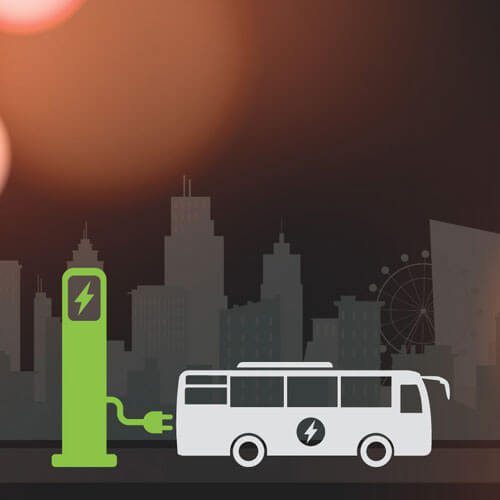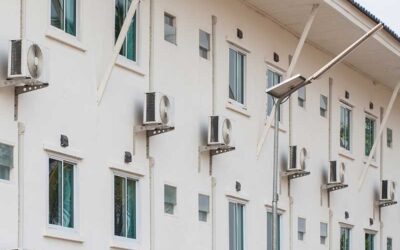Let’s Charge Up: India’s Electric Buses


In March 2019, the Department of Heavy Industries announced the second phase of the Faster Adoption and Manufacture of (Hybrid and) Electric Vehicles (FAME) scheme with a budget of INR 100 billion focusing on electric vehicles and their charging infrastructure. The scheme provides demand incentives to bring down the high initial capital investment required for electric vehicles for public and commercial transport. As both rural and urban India is dependent on buses for public transport, it is not surprising that 35% of the total FAME budget is allocated for demand incentives for electric buses. The State Road Transport Undertakings (SRTUs) in India, which manages over 1 lakh buses, are gearing up for electrification of a sizable portion of their fleet availing benefits under the FAME scheme. Within the public bus transport segment facilitating both intra-city and inter-city operations, the former is regarded as a potential early adopter in the nation-wide shift to electric mobility.
As several Indian cities plan electrification of their intra-city public transport bus fleets, it is important to remember that EV-transport is unique from the rest of the road transportation modes. Deployment of charging stations in a meticulous way is critical for a bus service provider to achieve smooth operation of its e-bus fleet. Adequate care must be taken while rolling out electric buses any major disruption in the service of the public bus network in a city could have grave implications.
AEEE’s Urban Infrastructure and Utility vertical intends to facilitate the transition of the public bus mobility in a Tier-I or Tier-II city in India to a fully electric format by shedding interesting insights into the electric bus and charging technology market. The study report “Charging India’s Bus Transport” is a guide for planning charging infrastructure for an intra-city electric bus fleet. Recognising the need to take a holistic approach, the study takes into cognizance the types of charging technologies and their technical and commercial details, the available electricity distribution network, the current e-bus specifications, the intra-city bus operation and route features, and the space requirement, all together.

The study finds that setting up of charging infrastructure is a multi-dimensional challenge and satisfying the mobility demand should be at the core objective of this exercise. The aspects of EV charger specifications and corresponding electricity grid connection and ancillary infrastructure requirements, cost of installation, and necessary spatial provision are some of the vital pieces of the planning puzzle. The major highlights from the study are
Ask the right questions
The three important questions that need to be answered in planning charging infrastructure of an electric bus fleet are
- Where to charge i.e., at the depots (nodes) and/ or en-route
- When to charge i.e., overnight and/ or during operating hours
- How to charge i.e., identifying type(s) of charging technology to be adopted
Size does matter
It is essential to maintain the passenger-carrying capacity of a public bus fleet on a route the same before and after electrification. This implies that a 9-meter diesel bus should be replaced at least by a 9-meter e-bus and a 12-meter diesel bus should at least be replaced by a 12-meter e-bus to maintain the same level of service post electrification.
Route right
The length of a route is a critical factor for planning the establishment of charging infrastructure for a public electric bus fleet. The study found that the average route length of the intra-city bus services in Tier-I and Tier-II cities in India is 33 km.
No need to charge as you go
It is not necessary to set up intermediate or en-route charging stations for intra-city bus transport in India if a 12m bus with 200 kWh battery is selected. The purpose of en-route charging is to replenish an electric bus with sufficient charge to reach the destination node if a case arises where the range of the bus may not be adequate to make the trip. If an electric bus with 200 kWh battery is selected then such a scenario is improbable as far as an intra-city public transport is concerned, and it is not necessary to set up en-route charging stations.
What’s your technology
The three technologies used for charging electric buses all over the world are conduction, induction or battery swapping. Among the three conductive charging is the most popular option, whereas the other two are currently limited in deployment.
Myth buster
Both AC and DC charging technologies are successfully used for charging e-buses. There is a popular misconception that AC charging is slow, and DC charging is fast. Fact: at the same charging power, the charging time for a battery is equal regardless of the charger being AC or DC. However, AC charging is only feasible if the electric bus has a charger on-board.
The study has developed an innovative framework for examining the optimum charging capacity required to meet the charging demand of an intra-city public electric bus fleet on a route. The practical framework based on key operational parameters is tested against real-life values from select bus routes in Delhi and Surat. The study report also presents a tool for selecting the “best-fit” technology for charging an intra-city fleet based on techno-economic parameters. For more information about the “best-fit” charging technology for buses and the optimal charging capacity for a route please refer to our report.
This blog has been drafted by Senior Research Associate, Chandana Sasidharan with research inputs from the Electric Vehicles team, under the Urban Infrastructure & Utilities vertical




